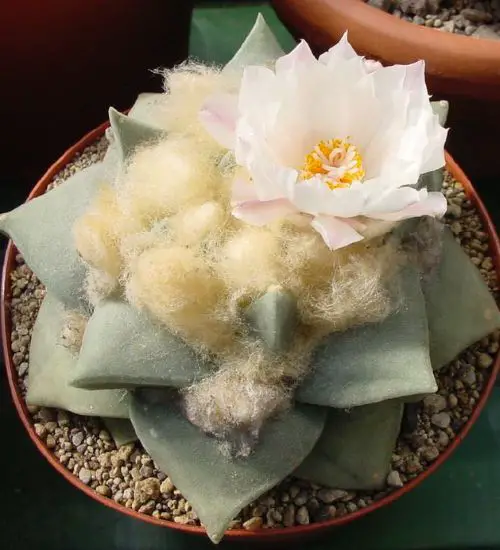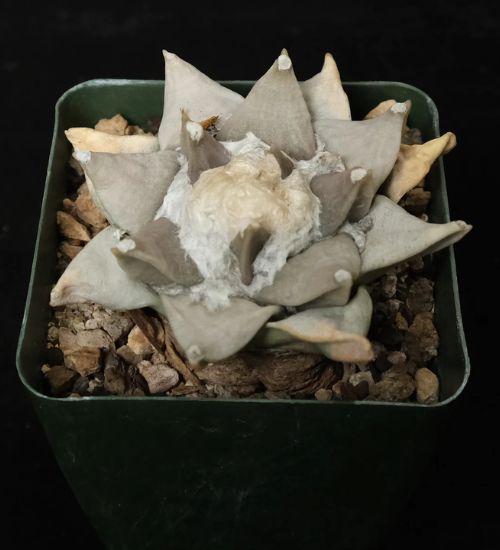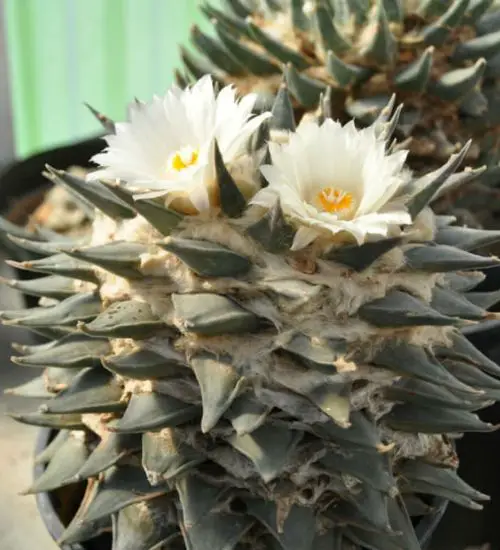Sun: full sun
Water: Typical water needs for a succulent
Temperature: Zone 9b from 25° F to 30° F (-3.9° C to -1.1° C) to Zone 11b from 45° F to 50° F (7.2° C to 10° C)
Winter Survival: Not cold hardy
Propagation: seeds
Flower: in the Fall
Flower Type: white
Toxic: Generally non-toxic to humans and animals
Dormant: summer
Space Requirement: Outdoors
Common Problems: pests
Where to buy Ariocarpus retusus?
Basc Care for Ariocarpus retusus
Watering
Regular watering period should be every 2 weeks
What you need to remember is that this type of succulents needs to be watered for every 2 weeks
Fertilizing
Only feed this succulent during its active growing seasons which means winter. Use the right fertilizer applied in the right amounts. Applying half-strength balanced fertilizer every month or so is recommended for optimal results.
Do not fertilize during summer as the plant is dormant.
Sun & Location Requirements for "False Peyote, Living Rock, Living Rock Cactus, Star Rock"
Ariocarpus retusus requires full sun in order to thrive. When choosing a spot for your succulent, make sure it gets at least 6 hours of direct sunlight per day. If the leaves start to look pale or weak, this could be an indication that the succulent isn't getting enough light.
As per this succulent profile, it is only able to stay healthy when the environment temperature is above the range of zone 9b from 25° F to 30° F (-3.9° C to -1.1° C).
When temperatures drop below freezing, it is important to take precautions to protect Ariocarpus retusus from the cold. Insulating and providing adequate drainage for the plant are key elements in helping it survive winter weather. Wind and sun exposure should also be minimized to prevent frost damage.
Any succulents in the group will need a large space to grow. You should place your pot outdoor. Since this plant needs a lot of space than other succulents, you should consider not planting them together with other succulents/plants.
Propagation
Propagating Ariocarpus retusus from seeds is a great way to produce new plants without relying on cuttings or divisions. It's important to look for healthy, dark and plump seeds that are slightly sticky when touched. The soil should be pre-mixed with well-draining potting mix, before evenly sowing the seeds and pressing them into the surface. To ensure successful germination, gentle misting of the soil should be done and placed in indirect light.
Toxicity

Ariocarpus retusus is generally non-toxic to humans and animals. However, it is important to be aware that certain parts of the plant may contain toxins which can cause mild skin irritation. It is advised that you keep the plants away from small children or pets, as they may unknowingly ingest them and suffer ill effects.
Pests and Diseases
Ariocarpus retusus can be affected common pests and diseases like most of the other succulents such as mealybugs.
If you do spot any of pest signs, you can treat your succulent using below methods.
- Mealybugs: quarantine, clean infected plants, soapy water.
Besides that, to prevent serious health issues from happening, keep your succulent in a well-ventilated area and check it regularly for any signs of pests or health problems.


